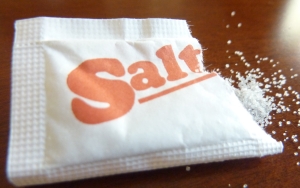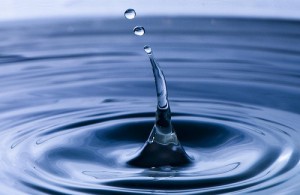Do you ever notice your lips tasting like salt or feel grainy salt crystals on your face after hiking in hot weather? Maybe your eyes burn as sweat drips off your eyelids. Those are electrolytes—what is left when the water component of sweat evaporates. They need to be replenished by drink and diet.
An electrolyte imbalance is not just a theoretical concern. It can lead to muscle cramping and fatigue, especially during prolonged activities like backpacking or hiking. This imbalance, caused by the loss of water through sweat or elimination, can result in muscle cramping and heart palpitations if you do not consume enough minerals from food or fluids. If you drink too much water, it can flush out electrolytes from your body. Your body tries to maintain the proper electrolyte balance but can not if you don’t replenish the minerals by eating a balanced diet. The consequences of this imbalance are not to be taken lightly, as they can significantly affect your backpacking experience.
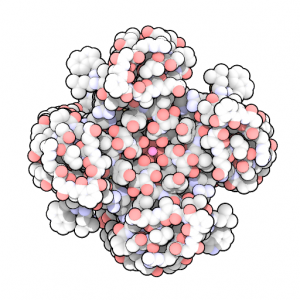
What are electrolytes?
Electrolytes are electricity-conducting ions or salts. They consist of more than just standard sodium chloride (table salt). Specifically, electrolytes are positive ions of sodium, potassium, calcium, and magnesium and negative ions of chloride, bicarbonate, sulfate, and phosphate. The ion charge provides the voltage for the blood cells to move around the body and perform their functions. But more than that, electrolytes are essential because they allow the cells in our bodies to function properly and maintain our energy and stability.
Replacing Electrolytes
The loss of excessive amounts of electrolytes and water can quickly dehydrate you. For obvious reasons, fluid intake should always remain more than sweat loss. Water is vital for digestion and metabolic waste. And electrolytes are essential for the body to retain water. You can prevent dehydration by staying hydrated, but water alone is not enough to regain electrolyte balance. You also need to consume foods high in electrolytes. Sodium chloride is the primary electrolyte lost through sweat during exercise, with smaller amounts of potassium, calcium, and magnesium losses.
It’s not just about what you drink, but also what you eat that matters in maintaining a balanced diet and replenishing your electrolytes. Follow these steps to replenish sodium and potassium requirements in your diet –
1. Do not restrict salt intake in your food.
The guideline for healthy adults is to consume about 1 tsp per day, which is about 2300 mg, to replace the amount lost daily through sweat.
2. Incorporate foods containing potassium in your diet.
Potassium-rich food sources come from a wide variety of fruits & vegetables –
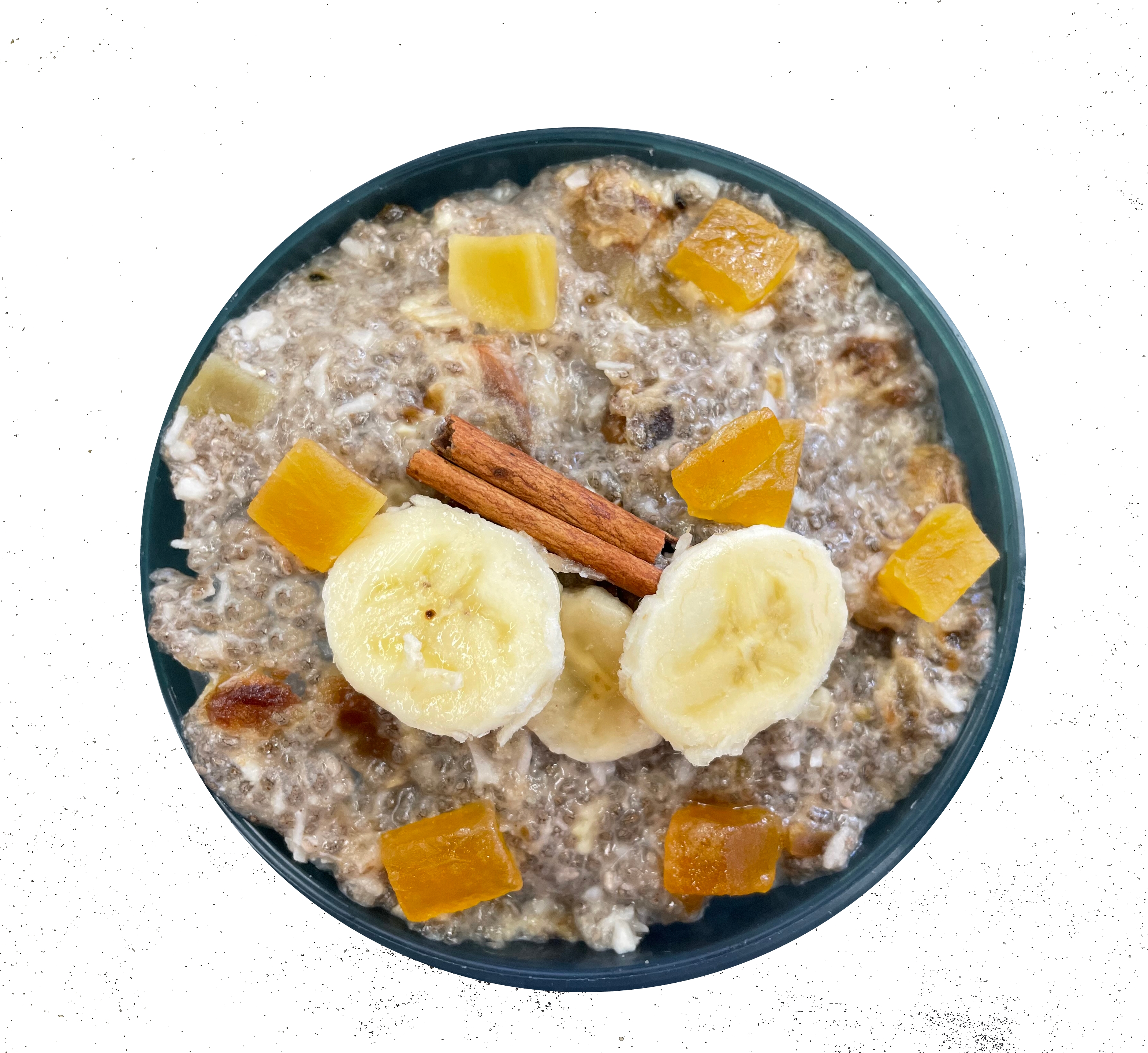 Fruits such as bananas, dates, raisins, papaya, coconut, avocado, and apricots are high in potassium. Fruits are excellent to eat when dried because they become a concentrated source of potassium. Avocados are challenging to dry, so pack fresh – the calorie load is worth the weight, and they’ll survive for several days if packed with care (keep cushioned or on top of your pack). Avocados are a fantastic high-calorie treat in the wilderness, loaded with healthy fat. Pair with sprouts and hummus for a tortilla sandwich. Pair with sprouts, hummus, & olive oil for a tortilla sandwich.
Fruits such as bananas, dates, raisins, papaya, coconut, avocado, and apricots are high in potassium. Fruits are excellent to eat when dried because they become a concentrated source of potassium. Avocados are challenging to dry, so pack fresh – the calorie load is worth the weight, and they’ll survive for several days if packed with care (keep cushioned or on top of your pack). Avocados are a fantastic high-calorie treat in the wilderness, loaded with healthy fat. Pair with sprouts and hummus for a tortilla sandwich. Pair with sprouts, hummus, & olive oil for a tortilla sandwich.
Vegetable sources that are high in potassium include potatoes, spinach, lentils, and beans (especially lima, kidney, and black).
- Dehydrated potato-based meals or meals containing dried spinach can be found easily;
- Beans add a lot of protein, fiber, flavor, and substance to dishes; look for dehydrated or instant beans, lentils, or bean flakes instead of uncooked dry beans; Dried soybeans (edamame) are challenging to find. Instead, soy is commonly found in energy bars, non-dairy milk powder, and energy drinks, and it can be purchased dried in the form of TVP (textured vegetable protein). However, we advise against consuming soy-based TVP as it is highly processed, often GMO, and a poor source of nutrition. Look at pea-protein instead.
3. Incorporate foods containing magnesium in your diet.
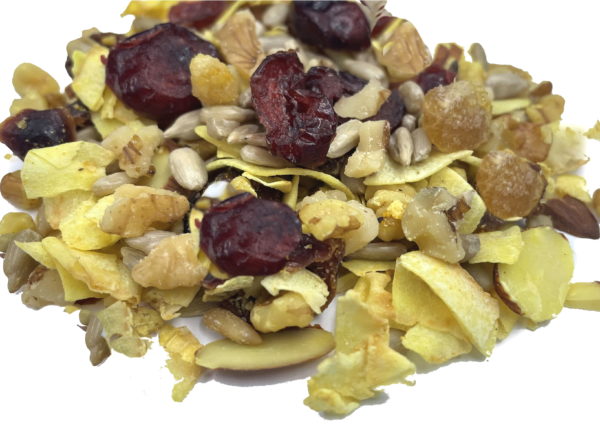
Magnesium is a crucial mineral that serves as a cofactor for over 300 biochemical reactions in the body. These reactions include breaking down glucose into energy and maintaining proper muscle and nerve function. A lack of magnesium can result in lactic acid buildup, leading to muscle soreness and fatigue. When magnesium levels drop, energy levels suffer. Magnesium deficiency is common, especially among backpackers, who require more magnesium due to increased losses from muscle stress and heavy sweating.
Food sources high in magnesium include nuts (especially almonds and cashews), seeds (especially pumpkin seeds and chia seeds), black beans, tofu/soy, quinoa, sprouts, and dark chocolate.
Consider adding dairy products, leafy greens, and fortified foods to your diet for calcium.
4. Stay hydrated by drinking water throughout the day, regardless of your thirst.
The clothing typically worn for outdoor activity is designed to wick away moisture from the skin allowing it to dry fast. Wicking clothing is excellent for comfort, but it does make it difficult to gauge how much sweat we’ve lost. The burning sensation of salty sweat dripping into your eyes or the taste of salt on your lips is a sure signal that you are losing liquids and salt when it is hot outside. However, you probably don’t notice the amount of sweat lost when the temperature drops or it is windy. No matter the temperature outside, keep drinking throughout the day to stay hydrated — even if you don’t feel thirsty. When you are adequately hydrated, your body works more efficiently (including heating and cooling itself).
Outdoor Herbivore’s Meals that are High in Potassium & Magnesium:
- Toasted Sunburst Muesli – mixed grain cereal with instant soy milk, dates, and raisins
- Lickety-Split Lentils – contains lentils and spinach
- Backpack Chili Mac – contains lentils and mixed beans, with chili, cheese, and pasta
- Cozy Curry Soup – spiced soup with chickpeas, lentils, potatoes, and spinach
- Coconut Chia Peel – powdered banana, coconut, and dates
- Happy Fella Pestobealla – portabella mushroom, pesto, and pasta with walnuts and cashew milk
- Lazy Lentil Salad – lentils, sunflower seeds, and fruit in a zesty vinaigrette
- Sunrise Tofu Scramble – dried tofu, potato, and mixed vegetables.
